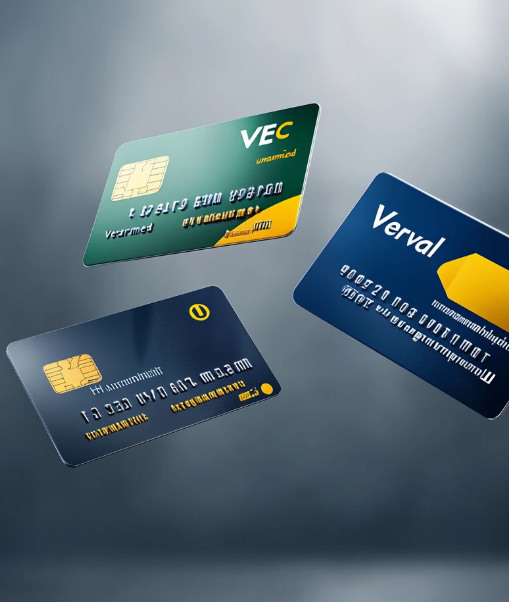Although Bitcoin is the most recognized and pioneering cryptocurrency, the world of digital currencies extends far beyond it. In fact, there are more than 23,000 different cryptocurrencies today, and they all fall under the category of “altcoins.” In this blog, we’ll dive into what altcoins are, the various types of altcoins, and how they differ from Bitcoin, along with the pros and cons of investing in them. We’ll also touch on some of the top altcoins to consider in 2024.
What Are Altcoins?
Altcoins are essentially any cryptocurrency that is not Bitcoin. The term “altcoin” is a blend of “alternative” and “coin,” highlighting their role as alternatives to Bitcoin. While some consider Ethereum (ETH) to be an altcoin, it is often treated as a separate category because it introduced groundbreaking functionalities like smart contracts and decentralized applications (dApps).
The first altcoin, Namecoin, was launched in 2011, setting the stage for a new wave of digital currencies aimed at improving Bitcoin’s limitations. Many altcoins strive to offer advantages such as faster transactions, greater energy efficiency, or enhanced privacy features.
Key Altcoin Categories
Altcoins come in various forms, each serving a specific purpose. Here’s a breakdown of the most common types:
Stablecoins
Stablecoins are cryptocurrencies pegged to the value of an asset like the US dollar or gold, minimizing the volatility typically associated with digital currencies. Because of their stability, they’re ideal for daily transactions or as a safe haven in turbulent markets. However, they aren’t favored for investments due to their consistent value.
Popular stablecoins include Tether (USDT) and Dai (DAI), the latter running on Ethereum’s blockchain.
Proof of Work (PoW) Coins
PoW altcoins are validated through a process called mining, where powerful computers solve complex mathematical equations to verify transactions. This method, first introduced by Bitcoin, requires considerable energy, making it less efficient than newer technologies.
Well-known PoW altcoins include Litecoin (LTC), Dogecoin (DOGE), and ZCash (ZEC).
Proof of Stake (PoS) Coins
In contrast to PoW, PoS altcoins rely on a staking process where holders lock up their cryptocurrency to help validate transactions. This method is more energy-efficient and allows for quicker transactions. The first PoS coin, Peercoin, paved the way for others.
Top PoS coins include Ethereum 2.0 (ETH), Cardano (ADA), and Polkadot (DOT).
DeFi Coins
DeFi (Decentralized Finance) altcoins use blockchain technology to recreate traditional financial systems like banks and exchanges, but without central authority. These coins enable decentralized lending, borrowing, and trading.
Notable DeFi altcoins include Ethereum (ETH), Maker (MKR), and Uniswap (UNI).
Governance Coins
Governance coins allow holders to vote on project decisions, giving them a say in the development and direction of a project. These coins play a vital role in Decentralized Autonomous Organizations (DAOs) and other decentralized systems.
Examples include Maker (MKR), Compound (COMP), and Aave (AAVE).
Utility Coins
Utility coins are designed to provide access to services or functionalities within a blockchain. These coins are often used to pay for transaction fees or to purchase services within their networks. For instance, Ether (ETH) is used for transactions on the Ethereum network.
Filecoin (FIL) is another example, where utility tokens are used to purchase storage space.
Meme Coins
Meme coins are a fun category that revolves around internet culture, often influenced by memes. They have become popular due to viral moments and celebrity endorsements. Dogecoin (DOGE) and Shiba Inu (SHIB) are the most well-known examples.
Bitcoin vs. Altcoins: Key Differences
While both Bitcoin and altcoins operate on blockchain technology, several differences set them apart.
- Origin: Bitcoin, created in 2009 by the pseudonymous Satoshi Nakamoto, was the first cryptocurrency. Altcoins emerged as alternatives to Bitcoin, with Namecoin being the first altcoin in 2011.
- Technology: Bitcoin uses Proof of Work (PoW), which is energy-intensive and has slower transaction speeds. Many altcoins, such as Ethereum 2.0, have adopted Proof of Stake (PoS), which is more energy-efficient and faster.
- Purpose: Bitcoin was created as a decentralized digital currency, aiming to replace traditional fiat currencies. In contrast, many altcoins have more specific use cases, such as enabling smart contracts, enhancing privacy, or supporting decentralized finance (DeFi).
- Market Influence: Bitcoin often dictates the overall market sentiment. While some altcoins mirror Bitcoin’s price fluctuations, others are more influenced by technological advancements or specific news.
Pros and Cons of Altcoins
Advantages
- Innovation: Many altcoins bring new features like faster transaction speeds, better scalability, or enhanced privacy.
- Lower Cost: Altcoins are often more affordable than Bitcoin, making them accessible to new investors.
- High ROI Potential: Some altcoins have seen massive price surges, offering the potential for substantial returns.
- Targeted Use Cases: Altcoins are designed to solve specific problems, such as supply chain management, decentralized finance, or privacy.
Disadvantages
- Volatility: Altcoins are often more volatile than Bitcoin and can experience significant price swings.
- Market Manipulation: Smaller altcoins are vulnerable to price manipulation, such as pump-and-dump schemes.
- Adoption Challenges: While many altcoins offer unique solutions, not all achieve widespread adoption or real-world use.
- Competition: With thousands of altcoins on the market, new ones must innovate to stand out from the crowd.
Top 10 Altcoins to Consider in 2024
While the volatile nature of the crypto market makes predictions difficult, here are some of the top altcoins to watch in 2024 based on their technology and potential:
- Ethereum (ETH)
- Binance Coin (BNB)
- Avalanche (AVAX)
- XRP (XRP)
- Cardano (ADA)
- Polkadot (DOT)
- Solana (SOL)
- Dogecoin (DOGE)
- Shiba Inu (SHIB)
- USD Coin (USDC)
The Future of Altcoins
The altcoin market continues to evolve rapidly, with thousands of cryptocurrencies vying for attention. While Bitcoin remains the dominant force, altcoins are pushing the boundaries of what’s possible with blockchain technology. As the market matures, altcoins that bring real-world utility and innovative solutions are likely to stand the test of time.
Despite the risks and uncertainties that come with investing in altcoins, their potential for growth and transformation in the digital economy is undeniable. As the crypto space continues to expand, understanding altcoins will become increasingly important for anyone looking to invest in the future of cryptocurrency.













